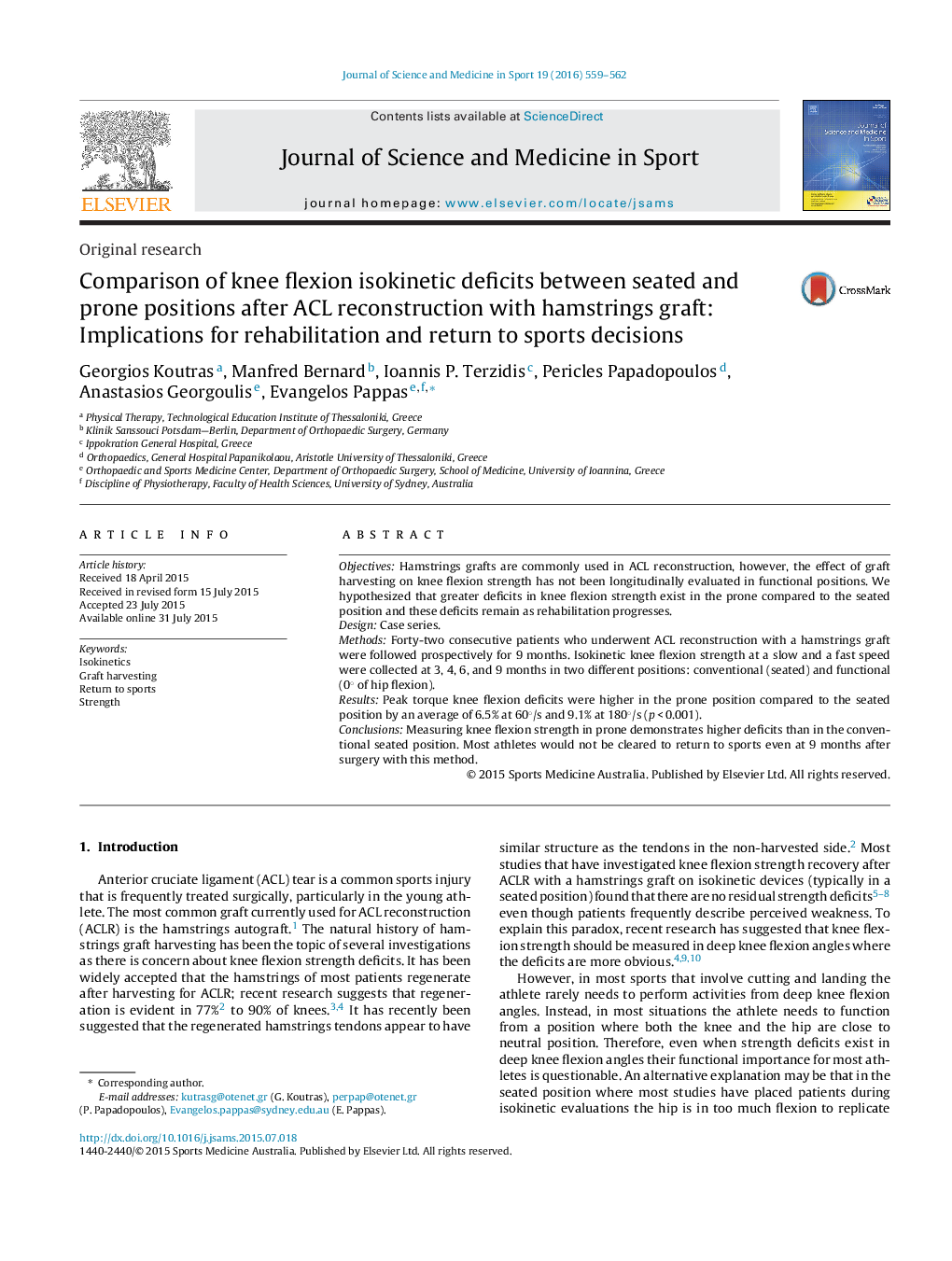| کد مقاله | کد نشریه | سال انتشار | مقاله انگلیسی | نسخه تمام متن |
|---|---|---|---|---|
| 2701382 | 1144428 | 2016 | 4 صفحه PDF | دانلود رایگان |
ObjectivesHamstrings grafts are commonly used in ACL reconstruction, however, the effect of graft harvesting on knee flexion strength has not been longitudinally evaluated in functional positions. We hypothesized that greater deficits in knee flexion strength exist in the prone compared to the seated position and these deficits remain as rehabilitation progresses.DesignCase series.MethodsForty-two consecutive patients who underwent ACL reconstruction with a hamstrings graft were followed prospectively for 9 months. Isokinetic knee flexion strength at a slow and a fast speed were collected at 3, 4, 6, and 9 months in two different positions: conventional (seated) and functional (0° of hip flexion).ResultsPeak torque knee flexion deficits were higher in the prone position compared to the seated position by an average of 6.5% at 60°/s and 9.1% at 180°/s (p < 0.001).ConclusionsMeasuring knee flexion strength in prone demonstrates higher deficits than in the conventional seated position. Most athletes would not be cleared to return to sports even at 9 months after surgery with this method.
Journal: Journal of Science and Medicine in Sport - Volume 19, Issue 7, July 2016, Pages 559–562
